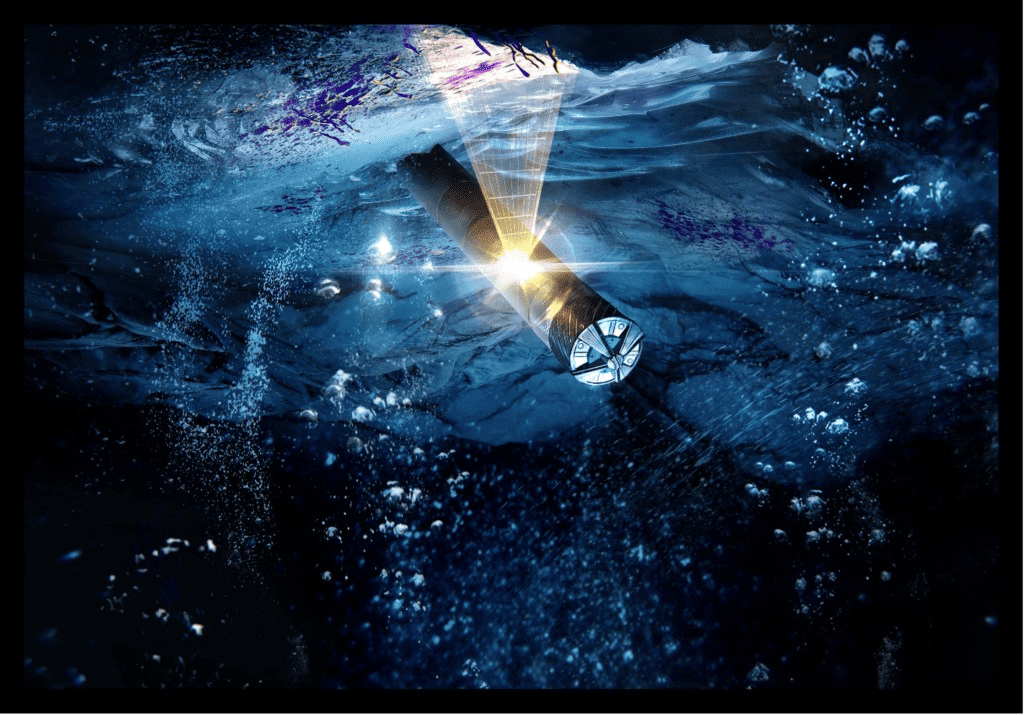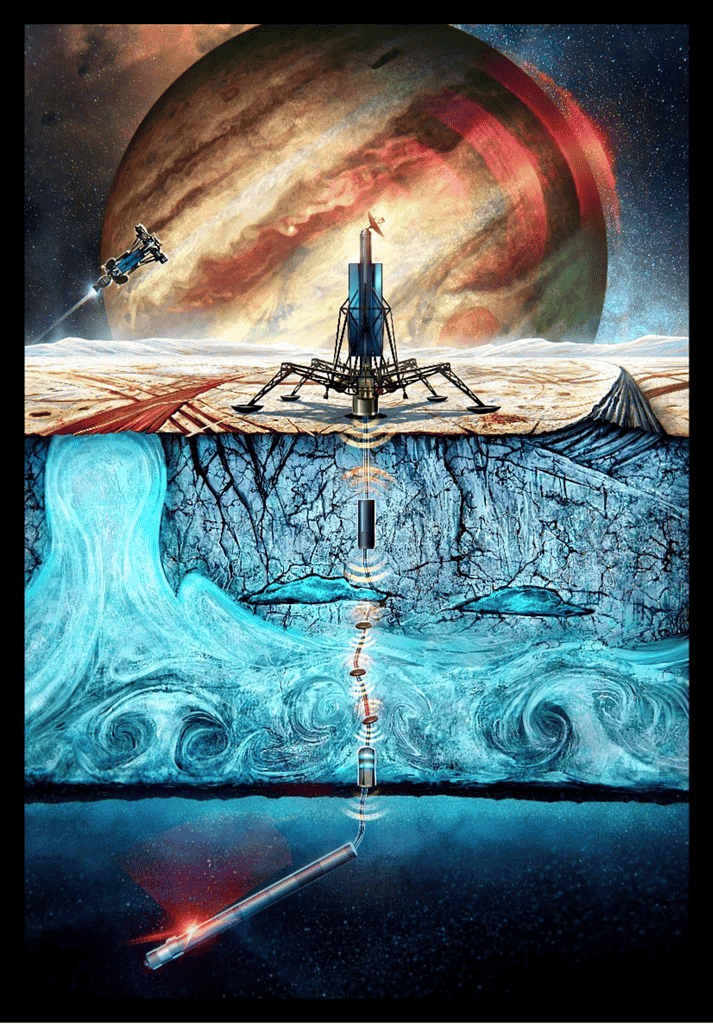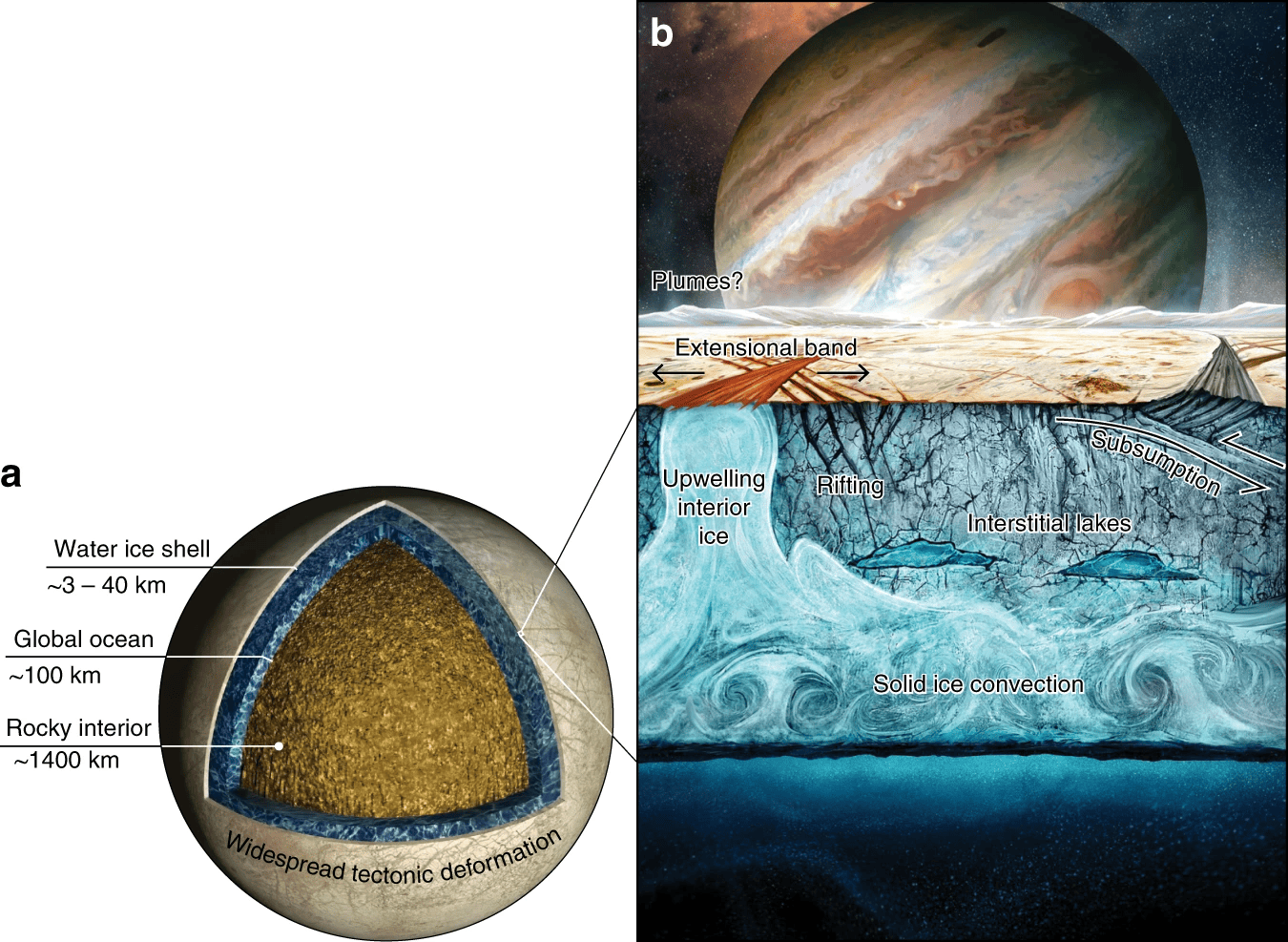
NASA has embarked on an ambitious quest to explore the possibility of life beyond Earth. We’re not talking about alien life in a galaxy far, far away — but right here, in our cosmic neighborhood. This bold endeavor, which could redefine our understanding of life in the universe, centers around the development of a cryobot. The cryobot aims to penetrate the icy crusts of Jupiter’s moon Europa and Saturn’s moon Enceladus, delving into the depths of these alien oceans in search of life.
Breaking the ice on alien life
If you’re looking for life in our solar system, you’re probably looking at ice. Sure, places like Mars or Venus look a lot like Earth at first glance, but life needs water to exist — at least life as we know it. “Follow the water” has been the mantra of astrobiologists for years, NASA says. Now, this mantra has taken the space agency to the frozen moons of Saturn.
These moons are super cold. Their surface is completely frozen. But there’s a twist: beneath the frozen surface, there lies an ocean of liquid water. Gravitational stress generates friction and this friction creates enough heat to melt the water.
This type of mission holds immense potential. There are dozens of frozen moons in the outer parts of our solar system, and some of them are promising when it comes to holding liquid water. In fact, some of these moons have more water than the Earth’s oceans. Add in the fact that ice shields them from radiation, and you end up with some promising conditions for life to exist.
Exploring these frozen moons and their potential for life is indeed a significant opportunity. Here’s why:
- They have a lot of liquid water. The presence of liquid water on these moons indicates the possibility of habitable environments. This is most likely microbial life, but potentially even more complex organisms.
- They seem to have the right chemistry. It’s not just water: these moons seem to have salts and organic molecules that are necessary for the building blocks of life.
- They’re shielded from radiation. Without an atmosphere, radiation can be devastating for life forms. A thick blanket of ice can help with that.
Ultimately, we have a realistic chance of finding alien life in our very own solar system. But you need a way to break through the icy surface. This is where the cryobot comes in.

The cryobot is essentially a cylindrical probe. Its main goal is to melt through ice using heat. The heat melts the ice in front of the probe, and the ice then flows to the sides of the probe before refreezing. This method has already worked on Earth and has become a key way to study glaciers. However, the colder, thicker ice of alien moons poses a bigger challenge.
NASA tried several different designs in its Scientific Exploration Subsurface Access Mechanism for Europa (SESAME) and Concepts for Ocean worlds Life Detection Technology (COLDTech) programs. Ultimately, they zoomed in on this type of heat drilling approach.
To get this to work, NASA says four systems are crucial:
- The power system. Melting ice requires power, and with current technology, only a nuclear power system can work for this goal. Several nuclear power systems were tried. This technology is already within our reach, as demonstrated in previous missions.
- The heat management system. You generate a lot of heat, but you need to make sure it doesn’t affect the probe itself. So you need a system that can pump the heat efficiently. Here, NASA zoomed in on two independently pumped fluid circuits — one that circulates internally and one that circulates melted ice. Some of this has already been demonstrated, but an entire system that can function reliably is still a work in progress.
- A system to bypass blocks of material. Research suggests that it’s not just water ice that the probe will have to penetrate. These icy shells contain blocks of dust or salt, which may be more difficult to penetrate with heat, so you need a different system. This requires the cryobot to incorporate a mapping sensor that can detect such obstacles, and a combination of “water jetting” and mechanical cutting to break through them.
- A communication system. Being able to communicate with Earth while under a thick sheet of ice will not be easy. In order to do this, the cryobot must be tethered to the surface lander
This is all doable

Of course, none of this would be easy. But NASA announced that it’s sticking with this concept. At a workshop where nearly 40 top researchers from diverse fields and institutions discussed this technology, the consensus was that it was feasible. Not easy, but feasible.
In addition to engineering developments, closer observations of these moons can also help NASA better prepare for this type of mission. For instance, the Europa Clipper is planned for launch in October 2024. The spacecraft is being developed to study the Galilean moon Europa through a series of flybys while in orbit around Jupiter.
The stakes are high. The potential for finding extraterrestrial life seems higher than ever. Humans have often speculated about this potential, but this is scientifically promising.
As NASA gears up for the groundbreaking cryobot mission to Europa and Enceladus, this mission is a continuation of our astronomical pursuit to understand the universe.
The potential discovery of life, even in its simplest form, on Europa or Enceladus would force us to rethink our way in the universe. Now, this goal may be within our sights.






